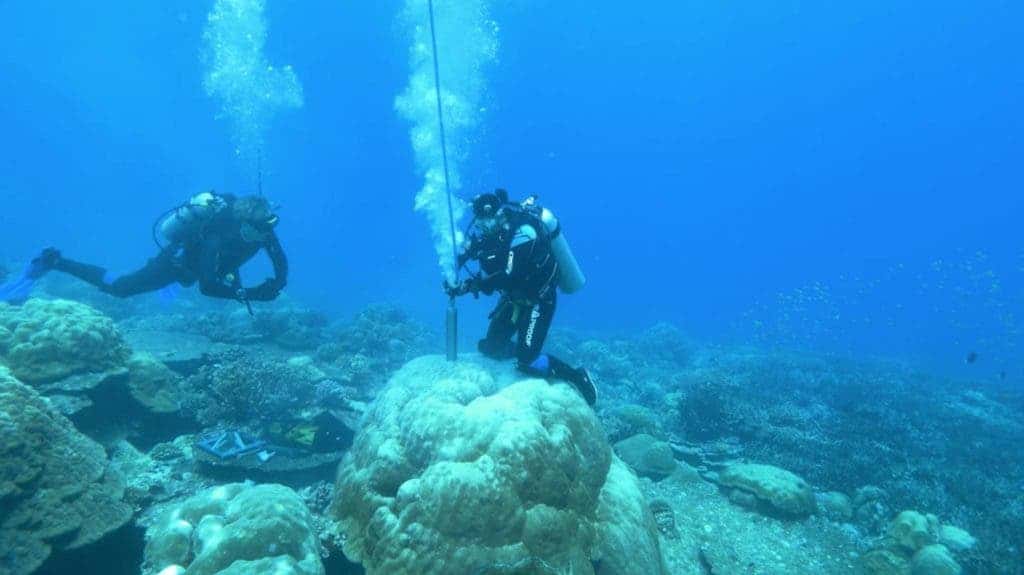
Researchers extracted coral cores in order to tease out information about Earth’s past climate. Credit: Jason Turl.
El Niño is a part of a routine climate pattern triggered by anomalously warm ocean water temperatures that periodically develop off the Pacific coast of South America. These seasonal events are extremely important because they cause extreme weather events, particularly in Australia, Southeast Asia, and the Americas. Recently, El Niños have been growing in intensity but scientists weren’t sure how they compare to the past because the instrumental record was too short. But thanks to a breakthrough study, researchers were able to use cores drilled from coral to produce a 400-year-long seasonal record of El Niño events.
Many experts in the field considered it impossible
The study performed by researchers led by Mandy Freund, at the time a doctoral student at the University of Melbourne and the Centre of Excellence for Climate Extremes, used coral cores in order to read variations in climate patterns, similar to how tree rings work. Each layer of coral records growth patterns and contain isotopes that can reveal nitty-gritty details about the climate of the past.
The new record shows a clear trend of intensification of El Niño events. Central Pacific El Niño activity increased over the late 20th-century while Eastern Pacific El Niños are expected to increase in the future. Until recently, scientists were constrained by temperatures records collected by weather stations and satellites, which were too short to put the recent decadal changes into perspective. In the context of climate change, having a record that extends beyond the centuries is extremely valuable.
According to Freund, there has been an unprecedented increase in the number of El Niños forming in the Central Pacific over the past 30 years, compared to all 30 year periods in the past 400 years.
“We are seeing more El Niños forming in the central Pacific Ocean in recent decades, which is unusual across the past 400 years,” Freund said in a statement.
“There are even some early hints that the much stronger Eastern Pacific El Niños, like those that occurred in 1997/98 and 2015/16 may be growing in intensity.”
The El Niño phenomenon is one of the most important features of the global climate, with serious implications for extreme weather events around the world. Thanks to the coral record, researchers will now be better equipped to model, predict, and plan for future El Niños and their potentially devastating impacts.
“By understanding the past, we are better equipped to understand the future, especially in the context of climate change,” said Dr Freund.
“Prior to this research, we did not know how frequently different types of El Niño occurred in past centuries. Now we do,” said co-author from the Centre of Excellence for Climate Extremes Dr Ben Henley.
The findings were reported in the journal Nature Geoscience.










